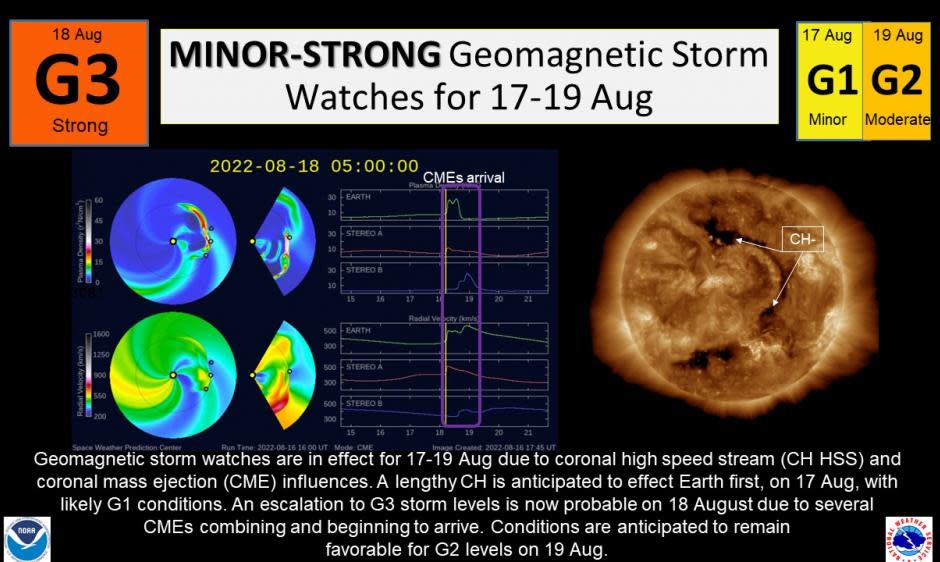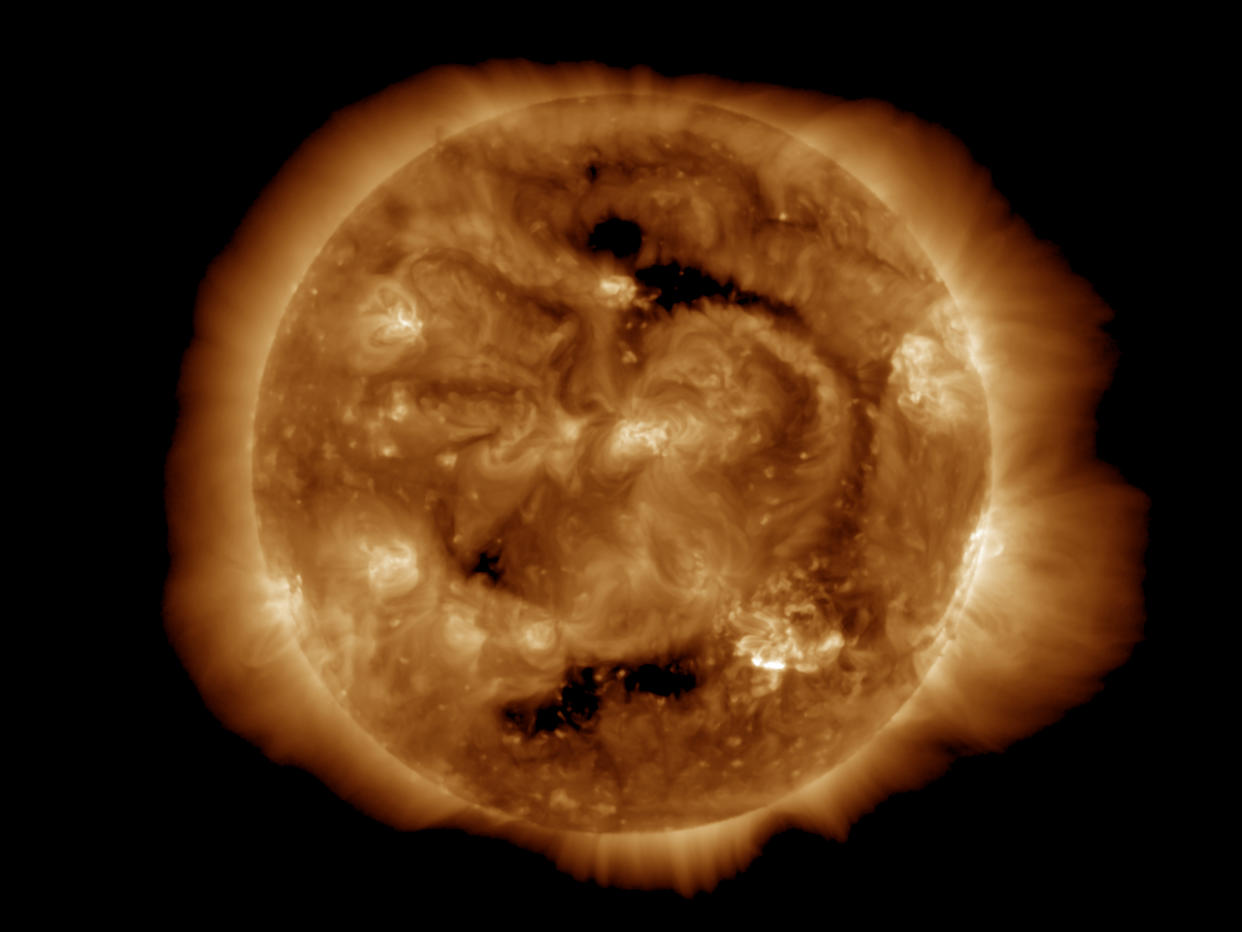A strong geomagnetic storm is heading toward Earth, space forecasters say
A strong geomagnetic storm caused by the sun could impact Earth later this week, space weather forecasters say.
The National Oceanic and Atmospheric Administration’s Space Weather Prediction Center on Wednesday issued a geomagnetic storm watch following recent explosions on the sun that have triggered strong solar flares and multiple “coronal mass ejections” that could reach the planet on Thursday.
NOAA defines a geomagnetic storm as “a major disturbance of Earth's magnetosphere that occurs when there is a very efficient exchange of energy from the solar wind into the space environment surrounding Earth.”
“The largest storms that result from these conditions are associated with solar coronal mass ejections (CMEs) where a billion tons or so of plasma from the sun, with its embedded magnetic field, arrives at Earth,” NOAA explains.
While most of this week’s disturbances are expected to have little to no impact, there is a chance that the expected storm could reach a level of 3 out of 5 on the geomagnetic storm severity scale.

That could cause power grid fluctuations and briefly disrupt satellite, radio and GPS communications, NOAA said.
The geomagnetic storm’s arrival also means that the northern lights could be visible as far south as Iowa on Thursday.
According to the official space forecast, the auroras “might be seen over the far Northeast, to the far upper Midwest, across portions of the north-central states, and perhaps over the northwest section of Washington state.”
While auroras are not uncommon, the likelihood of a collision of multiple coronal mass ejections — a celestial event referred to as “cannibal coronal mass ejections” — has some sky watchers anticipating a brighter than usual light show.
In July, the northern lights were “so bright that photographers captured the colorful show even in the heart of Seattle, where light pollution typically mutes visibility,” Fox Weather’s Andrew Wulfeck said.

Others are just excited about the solar eruptions.
“The sun just hurled a plume of cool, dark plasma into space,” astronomer Tony Phillips wrote in a blog post. “Don’t miss the impact.”
If you do miss it, though, don’t worry too much. NASA said last month that in the current solar cycle, “solar events will continue to increase as we near solar maximum in 2025.”
